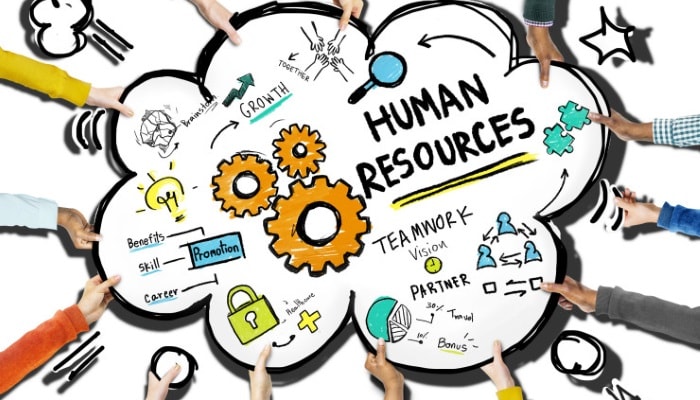
What are the key HR Responsibilities
HR activities can be divided into two broad categories:
1. Transformational or strategic in nature, which consist of developing organizational effectiveness and align HR and business strategies to achieve company objectives.
2. Transactional roles; cover key HR activities.
a. Recruitment
b. Learning and development
c. Reward
d. Employee relations
There are a couple of models in HR literature, here we will briefly talk about the three legged stool model. This is result from work by Ulrich (1997) and provided as per below:
The model describes the delivery of HR Management through 3 key areas:
1. Centers of expertise, this includes the provision of high-level advice
2. Business Parters, these HR roles work with line managers to reach their business objectives via effective strategies and execution of these strategies.
3. HR shared service centers, these HR roles handle routine transactional services.
Here we highlight these key transactional roles and responsibilities:
What are the Key HR Responsibilities?
Recruitment role: Recruitment is process that includes analysing job requirements, attracting employee to that job, screening and selecting suitable candidates, hiring and integrating the new employee within an organization.
Working Policies: Every organization may have implement different working policies. But, it is the best practice for an organization to orienting the employee on policies and procedure such as general company compliance guideline, schedules, safety and security.
Compensation and Benefits: The quality of your organization’s compensation and benefits packages plays a major role in retaining the talent.
How does employee retention benefit your company?
By continually assessing the quality of your workplace and HR programs, this will encourage employees to stay with your organization.
Ensure that your staff grows in knowledge and experience, and that their skill set support the goals of the business, this will help your organization to expand and continue to meet the changing needs of customers.
How does training & development benefit your company?
Training programs basically address hands-on task and skills improvement, career development emphasizes long-term qualities and expertise that employees need to enhance their career.
Regulatory issues
Complying with the ever-increasing number of federal regulations.
Example: Termination and Lay-Off Benefits.
If an employee, whose contract of service is terminated or he is laid off by his employer he is entitled to the payment by employers of:
(a) termination benefits;
(b) lay-off benefits;
However, an employee shall not be entitled to termination benefits payment under the following circumstances –
(a) upon the employee attaining the age of retirement if the contract of service contains a stipulation in that behalf; or
(b) dismissed by the employer, on the grounds of misconduct, or
(c) resigns voluntarily by the employee.
Furthermore, an employee shall not be entitled to any termination benefits payment if –
(a) his contract of service is renewed, or he is re-engaged by the same employer under a new contract of service on terms and conditions which are not less favourable; and
(b) the renewal or re-engagement takes effect immediately on the ending of his employment under the previous contract.
An employee is deemed to be laid-off if –
(a) the employer does not provide such work for him on at least a total of twelve normal working days within any period of four consecutive weeks; and
(b) the employee is not entitled to any remuneration under the contract for the period or periods (within such period of four consecutive weeks) in which he is not provided with work;
Termination and lay-off benefits payment shall not be less than –
(a) 10 days’ wages for every year of employment under a continuous contract of service with the employer if he has been employed by that employer for a period of less than 2 years; or
(b) 15 days’ wages for every year of employment under a continuous contract of serviced with the employer if he has been employed by that employer for 2 years or more but less than 5 years; or
(c) 20 days’ wages for every year of employment under a continuous contract of service with the employer if he has been employed by that employer for 5 year or more, and pro-rata as respect an incomplete year, calculated to the nearest month. Any termination or lay-off benefits payment payable shall be paid by the employer to the employee not later than seven days after the relevant date.
a. Below is link for Termination and Lay-off Benefits
b. Source: Malaysia Labor Law


